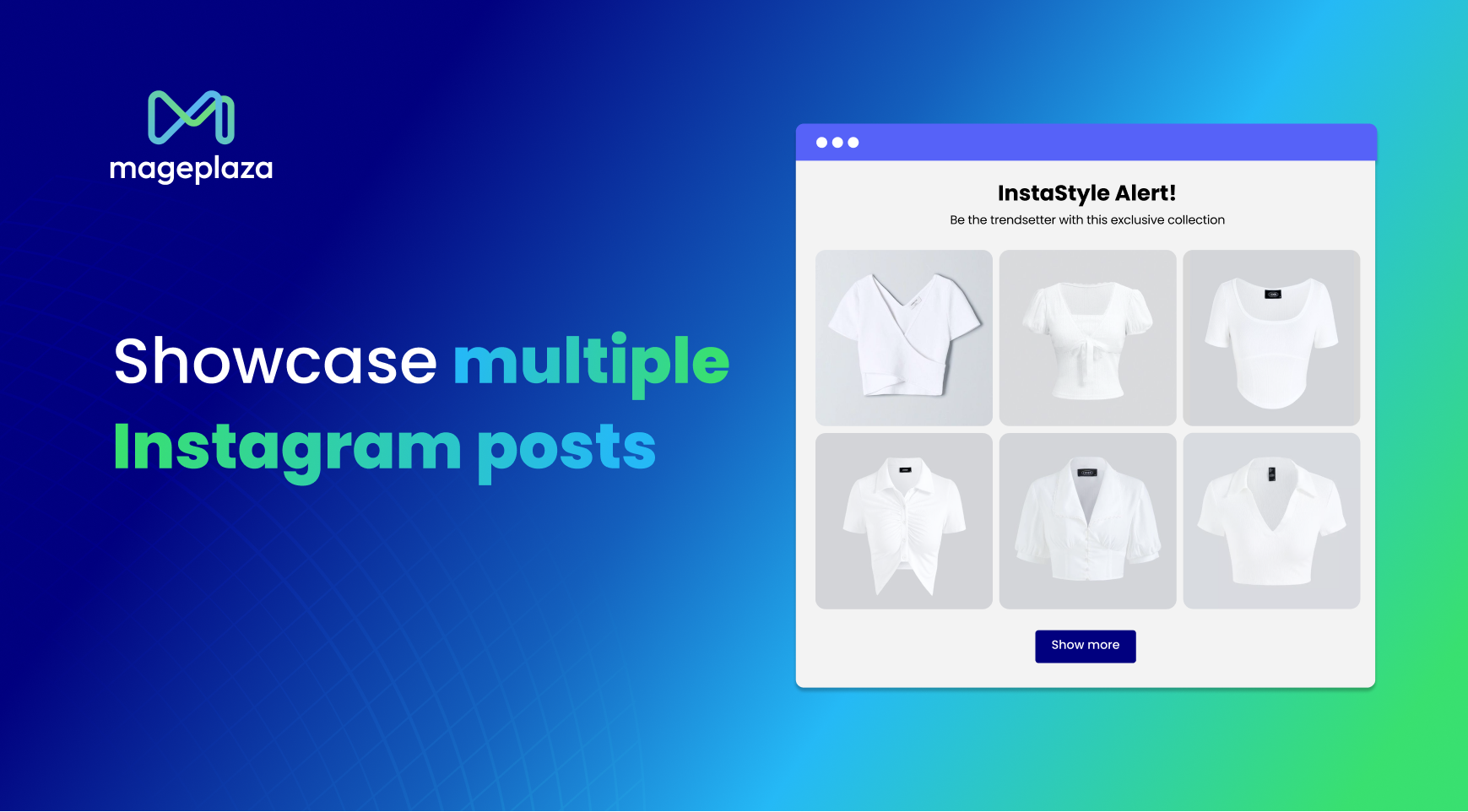What Is Shopify and How Does It Work: 2023 Updated
Summer Nguyen | 11-16-2023
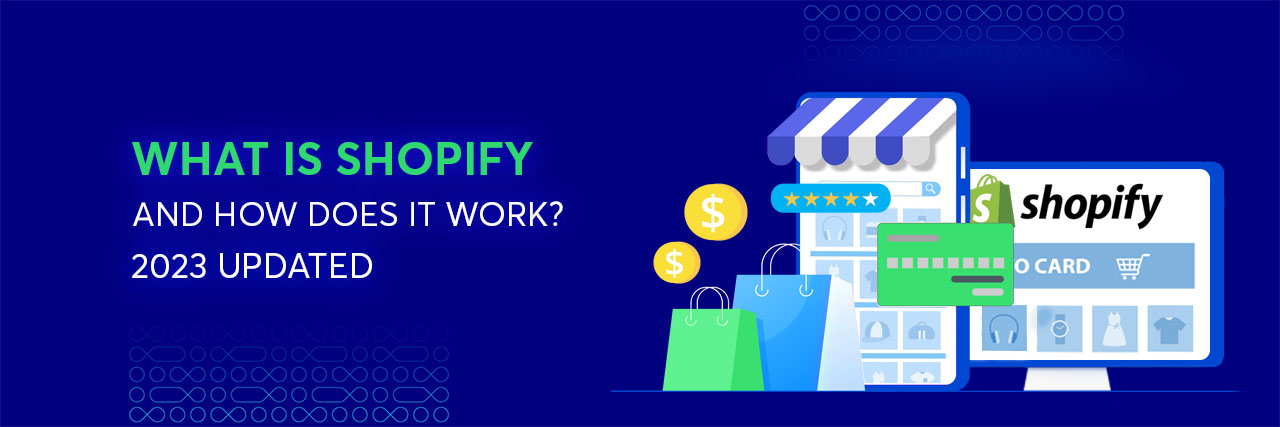
Are you a new seller looking for a platform to start your business? You must have heard about Shopify, one of the leading platforms for providing online store services for online sellers around the world. As of July 2023, there were over 2.1 million daily active users on the Shopify platform.
Whether you’re an aspiring entrepreneur or an established business owner, Shopify is your gateway to creating a captivating online store that stands out in the digital marketplace. In this comprehensive guide, we’ll unravel the magic behind Shopify’s success and dive deep into how this platform empowers businesses of all sizes to flourish in the rapidly evolving world of online retail.
Let’s start now!
Table of Content
What is Shopify?
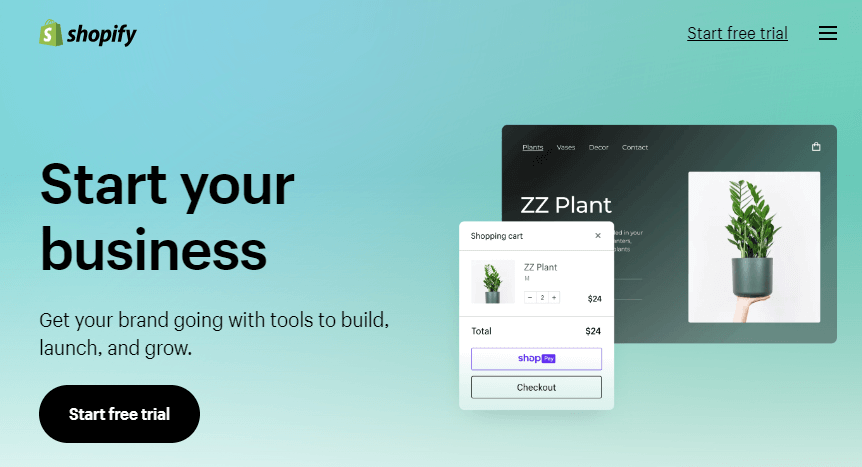
Shopify is an e-commerce platform that helps users build online sales websites using the Cloud SaaS model. You can easily create an online business store with full features such as product introduction, shopping cart, payment, product management, and social networking. With its steady growth over time, Shopify made over $5.6 billion in revenue and contributed $319 billion to the global economy in 2022. This made it the most famous eCommerce platform in the US market.
| Over 1.75 Million | $5.6 Billion | $319 Billion |
|---|---|---|
| Merchants Sell on Shopify | Revenue | Contributed to Global Economy |
| 175 | 2.1 Million | 457 Million |
| Countries Operating | Daily Active Users | People Bought from Shopify Store |
Shopify’s impressive point is that it helps you set up the above tasks quickly. Even people who are not tech-savvy, and have no programming knowledge, can easily create a professional sales website in a short time.
How does Shopify work?
Shopify’s business revolves around helping merchants deliver the ultimate buying experience for their customers while maximizing merchant productivity and profitability. The main activities you can do on Shopify include:
Sign Up and Set Up
- To get started, you sign up for a account. You’ll need to provide some basic information about your business and the products you intend to sell.
- Once you’ve created an account, you can choose a template or theme for your online store. Shopify offers a variety of customizable themes that determine the look and feel of your store.

Product Listing and Management
- You can add your products to the store using the Shopify admin interface. This involves uploading product images, writing descriptions, setting prices, and managing inventory.
- Shopify provides tools to categorize and organize your products, making it easier for customers to navigate your store.
Customization
- You can customize your online store’s appearance using the chosen theme. This might involve changing colors, fonts, layouts, and adding your logo.
- For more advanced customization, Shopify allows you to modify the theme’s code if you have coding skills.
Payment Gateway Integration
- Shopify integrates with various payment gateways, allowing customers to make secure online payments. Common options include credit cards, PayPal, and other digital payment methods.
- You’ll need to set up your preferred payment gateways in your Shopify admin settings.
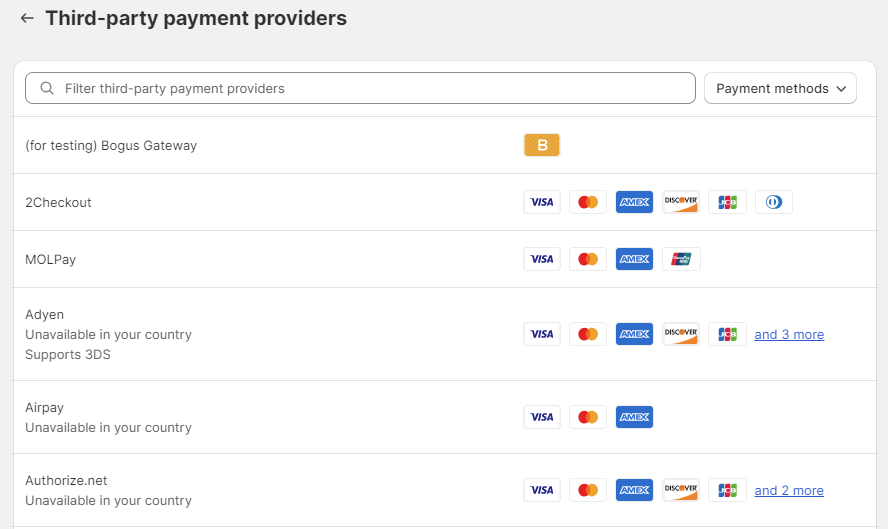
Order Management
- When customers place orders, you’ll receive notifications. You can manage and process these orders through the Shopify admin interface.
- Shopify provides tools to track orders, manage inventory, and print shipping labels.
Customer Engagement
- Shopify offers features to engage with customers, including the ability to enable product reviews and offer discounts or promotions.
- You can also set up customer accounts, allowing them to save their information for faster future purchases.
Marketing and SEO
- Shopify includes built-in SEO tools that allow you to optimize product pages for search engines. You can edit meta tags, titles, and descriptions to improve your store’s visibility in search results.
- You can also create and manage marketing campaigns using Shopify’s tools, including email marketing and social media integration.
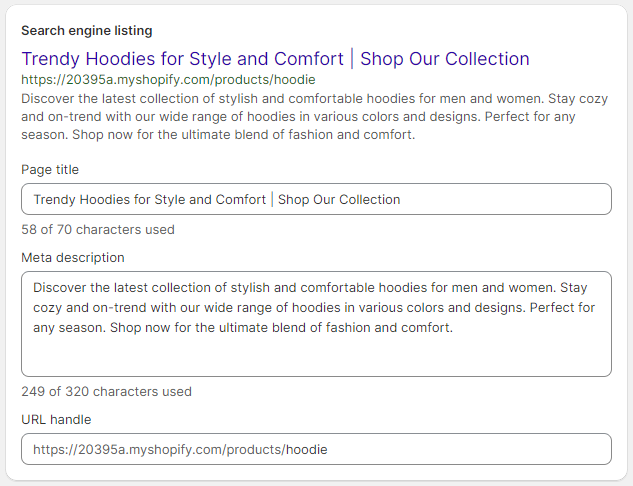
Shopify Pros and Cons
| PROS | CONS |
|---|---|
| User-Friendly Interface | Costs |
| E-Commerce Features | Transaction Fees |
| Customization | Limited Design Control |
| Payment Integration | Monthly Fees |
| App Store | App Dependency |
| Mobile Responsiveness | Data Portability |
| SEO Tools | Themes Cost Extra |
| Security and Hosting | Limited Blogging |
| Customer Support | |
| Scalability |
Shopify Pros
- User-Friendly Interface: Shopify’s interface is intuitive and user-friendly, making it accessible to beginners without extensive technical knowledge.
- E-Commerce Features: It offers a comprehensive suite of e-commerce tools, including product management, inventory tracking, order processing, and more.
- Customization: Shopify provides a wide range of customizable themes and templates, allowing you to create a unique and visually appealing online store.
- Payment Integration: It seamlessly integrates with multiple payment gateways, making it easy for customers to make secure online payments.
- App Store: The Shopify App Store offers a vast selection of apps and plugins that can enhance the functionality of your store, from marketing to shipping and more.
- Mobile Responsiveness: Shopify themes are designed to be responsive, ensuring your store looks and works well on various devices, including mobile phones and tablets.
- SEO Tools: Built-in SEO features help optimize your store for search engines, improving your online visibility and driving organic traffic.
- Security and Hosting: Shopify takes care of security and hosting, ensuring that your store is safe, secure, and accessible to customers at all times.
- Customer Support: Shopify offers customer support via various channels, including live chat, email, and phone, to assist with any issues or questions you may have.
- Scalability: Whether you’re just starting or have a growing business, Shopify offers plans and features that cater to businesses of all sizes.
Shopify Cons
- Costs: While there are affordable plans available, additional costs can accumulate through transaction fees, app subscriptions, and premium themes.
- Transaction Fees: Some plans come with transaction fees, which can add up if you’re processing a large number of sales.
- Limited Design Control: While customization is possible, advanced design changes may require coding knowledge, limiting full design control for non-developers.
- Monthly Fees: Shopify operates on a subscription model, which means ongoing monthly fees that can contribute to your operational costs.
- App Dependency: While the App Store offers numerous add-ons, relying heavily on apps can increase complexity and costs.
- Data Portability: Moving your store away from Shopify might involve difficulties in migrating data, which can be a concern for some businesses.
- Themes Cost Extra: While there are free themes available, premium themes often come with an additional cost.
- Limited Blogging: While Shopify supports blogging, it’s not as robust as platforms dedicated solely to content management.
Who Uses Shopify?
Entrepreneurs and Small Businesses: Individuals and small businesses, including startups and solopreneurs, use Shopify to quickly set up and manage their online stores, providing a platform to sell products and grow their businesses.
Brick-and-Mortar Retailers: Traditional retail businesses, such as stores and boutiques, use Shopify to expand their reach by establishing an online presence and selling products to a global audience.

Artists and Creators: Independent artists, crafters, designers, and creators use Shopify to showcase and sell their unique products, such as art, handmade crafts, and digital goods.
Direct-to-Consumer Brands: Businesses that manufacture or curate their products and want to connect directly with consumers leverage Shopify to create branded online stores, promoting their products without intermediaries.
E-commerce Entrepreneurs: Entrepreneurs involved in drop shipping, print-on-demand, subscription box services, and other innovative e-commerce models use Shopify to launch and operate their online ventures.
How much does Shopify cost?
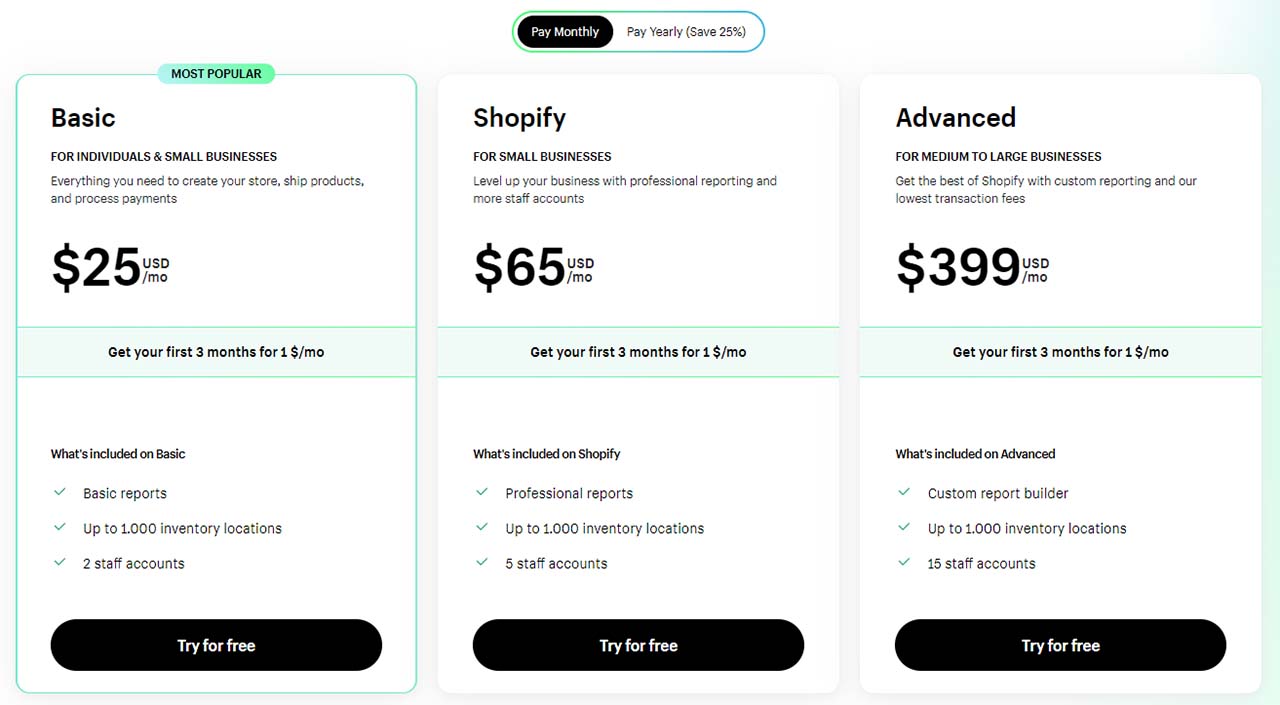
Depending on the size and goals of your business, Shopify offers different packages. Each plan includes a fixed monthly renewal fee, along with order-based transaction fees and currency conversion fees. You can compare the fees of the usage plans below.
| Plan | Monthly Subscription Fee | Online – Domestic Credit Card Rate |
Online – International Credit Card Rate |
POS Credit Card Rate |
Third-party Transaction Fee |
|---|---|---|---|---|---|
| Starter | $5 | 5% + $0.3 | Not Applied | Not Applied | 5% |
| Basic | $39 | 2.9% + $0.3 | 3.9% + $0.3 | 2.7% | 2% |
| Shopify | $105 | 2.6% + $0.3 | 3.6% + $0.3 | 2.5% | 1% |
| Advanced | $399 | 2.4% + $0.3 | 3.4% + $0.3 | 2.4% | 0.5% |
| Shopify Plus | From $2000 | 2.15% + $0.3 | 1% | 2.15% | 0.15% |
Basic Plan
If you’re just starting out in this vibrant e-commerce world, it’s better to start with a Basic plan, which costs $25 per month or $19 if you pay annually. This service package is suitable for the needs of building a comprehensive online store and integrating omnichannel sales, including drop shipping. The basic package includes both an online store and a blog, helping sellers optimize SEO to convert customer files for free on Google. Sellers can add an unlimited number of products and store links to sell on social media channels.
This package also provides a solution for businesses wishing to provide in-store payment transactions. For every online transaction, sellers take a fee equal to 2.9% of the transaction value plus 30 cents, while in-person purchases have a 2.7% fee.
Standard Plan
The standard Shopify plan costs $105 per month or $79 if you choose to pay annually. In addition to all the messages you receive with the Basic plan, the Standard plan also provides website performance reports, giving you the most comprehensive and accurate picture of your e-store business. The maximum number of employee accounts is 5, compared to 2 employee accounts with the Basic plan.
With this plan, you can use abandoned cart recovery, a separate domain for each country, and currency conversion.
The transaction fee of this plan is also lower than the basic plan, at 2.6% plus 30 cents for online transactions and 2.5% for in-person transactions.
Advanced Plan
The Shopify Advanced plan, which costs $399 a month, is designed for large-scale businesses both online and in person. They may need a lot of customization features to fit their website. Unlimited reserves and up to 15 employee accounts. This plan is built for broad traffic, with calculated third-party shipping rates. Users can gain access to e-commerce automation and reporting options.
Shopify Advanced has the lowest transaction fees of the plans Shopify offers, where online transactions cost 2.4% plus 30 cents, and live transactions are 2.4% with no surcharge.
Shopify Plus
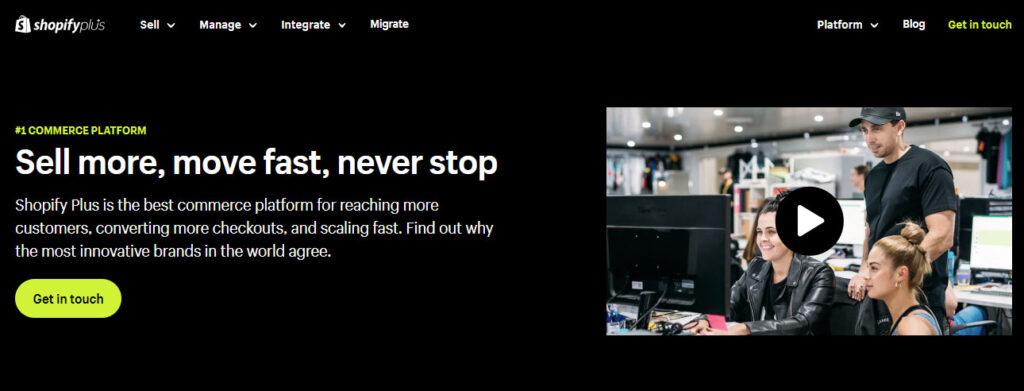
Shopify Plus starts at $2000 per month and is customized to the needs of your business. This service is intended for large enterprises with complex business structures, large staff sizes, and diverse product systems. To know exactly which plan and cost is right for your company, you must consult a Shopify Plus expert. Some of the benefits of using this plan for businesses are lower transaction costs, dedicated implementation engineers, and the freedom to customize important website functions.
In addition, Shopify Plus also provides a lot of additional features for sellers, such as automating promotions, automating repetitive tasks, and creating a sub-wholesale store associated with the store. existing stores, implement multi-channel commerce, and manage multiple international online stores simultaneously.
Payment and Transaction Fee
When conducting sales in local currencies, Shopify applies certain fees and costs that you should be aware of:
- Shopify Domestic Payment Fee: This fee is charged when you process credit card payments from customers whose cards are issued in the same country or region as your store. The fee amount is determined by the type of credit card used and the location of the customer. The fee is in your payout currency and covers the cost of processing the payment.
- Shopify Cross-Border Payment Fee: This fee is applicable when you process credit card payments from customers in a country or region different from that associated with your store. Like the domestic payment fee, the amount depends on the credit card type and the location of the customer.
- Third-Party Transactions Fee: This fee applies when you use a third-party payment provider (other than Shopify Payments, Shop Pay, Shop Pay Installments, and Paypal Express) to accept customer payments. These fees cover the cost of integrating with external payment providers. The actual fee amount varies based on your chosen Shopify plan. However, if you use Shopify Payments or the mentioned exceptions, you won’t be charged third-party transaction fees.
- Conversion Rate and Fee: Currency Conversion Rate: This is the market rate at which one currency can be exchanged for another. It’s not a fee, but rather the actual exchange rate. For instance, a rate of USD/EUR 0.8788 means that $1 USD is equivalent to €0.87 EUR.
- Currency Conversion Fee: This is the fee charged by Shopify when you accept payment in a currency different from your payout currency. This fee is applied to cover the cost of currency conversion. The fee is based on your store’s primary country and is charged in your payout currency. In the US, the fee is 1.5%, while in other countries and regions with Shopify Payments, it’s 2%.
Additional costs
In addition to a flat fee charged to the platform per plan, merchants also often pay for Shopify add-on apps or pre-designed themes. Some additional costs associated with using Shopify include:
- Domain: A domain is the web address of your online store (e.g., www.yourstorename.com). While Shopify provides a free myshopify.com domain, it’s recommended to purchase a custom domain that aligns with your brand. Custom domains are usually purchased annually and can range in price depending on the domain name and extension (e.g., .com, .net, .store).
- Premium theme: Shopify offers a variety of free themes, but if you’re looking for more advanced design and customization options, you might consider purchasing a premium theme from the Shopify Theme Store. Premium themes offer enhanced features, unique designs, and better customization capabilities. The cost of premium themes can vary, usually ranging from $100 to $300 or more.
- Premium apps and plus-ins: Shopify’s app store provides a wide range of apps and plugins that can enhance your store’s functionality, marketing, and customer experience. While there are free apps available, some advanced features and integrations might require premium apps that come with a monthly or annual subscription fee. The cost depends on the app’s complexity and features.
- Time: Time is a valuable resource that you’ll need to invest when launching an online store. This includes tasks such as setting up product listings, designing your store, creating content, and optimizing for search engines. The time you spend will vary depending on your familiarity with the platform and your store’s complexity.
- Development: If you have specific design or functionality requirements that go beyond the capabilities of available themes and apps, you might need to hire a Shopify developer. Development costs can vary widely based on the complexity of the work, the developer’s experience, and the customization required.
How To Make Money With Shopify?
Dropshipping

A large number of Mageplaza customers use Shopify to dropship. They find suppliers mainly in the US for clothes, cosmetics, skateboards, vapes, etc. Also, some people choose to dropship from Aliexpress. The dropship form requires very thorough research and analysis of products/keywords, which is not a simple task. The number of people who succeed with Aliexpress is not much because most people just copy other people’s products, but do not understand why they are successful.
Fulfillment by Amazon/ Private Label
There are quite a few people who have had success with FBA and Private Label and has become a strong seller on Amazon. However, they still use Shopify as a secondary sales channel and connect with Amazon. After an order is placed, the system will send it to Amazon to complete the order. There are also many people selling private-label products on Shopify. They are mainly related to soap, fitness supplements, cosmetics, foods, etc.
Sell auto-fulfillment t-shirts
There is currently a shift from traditional t-shirt sales by platforms like Teespring to t-shirt sales using Shopify and a platform that connects to Shopify. The most famous are Printful, Teelaunch, CustomCat, and Teezily Plus. Since selling t-shirts in the traditional way is not a sustainable business, when there is too much competition, businesses are gradually turning to Shopify as a sustainable platform.
Shopify Affiliate

Affiliate Shopify is a Marketing program that opens up a cooperative relationship between the shop owner and the attendees (Publisher) for the purpose of beneficial collaboration. Manufacturers bring in more customers and increase sales, and participants receive a commission for referring customers to find products from the manufacturer’s shop. It is a very interesting and interesting form of Marketing.
Usually, store owners only apply the form of running ads on Facebook, their fan page pages, or participating in user acquisition groups to have the opportunity to reach more customers. Shopify affiliate marketing for your Shopify store can be a new and potential form of outreach for shop owners in this new age.
Where Can I Sell Using Shopify?
- Online Store: Set up your main online storefront with customizable themes.
- Point of Sale (POS): Process in-person transactions using Shopify’s POS system.
- Social Media: Sell directly on platforms like Facebook and Instagram.
- Marketplaces: Connect to Amazon and eBay for wider reach.
- Google Shopping: Display products in Google search results.
- Buy Buttons: Add buy buttons to your website or blog.
Mageplaza Instagram Feed for Shopify
Engage visitors, build trust, and customize effortlessly. Streamline tasks and boost interaction.
Check it out!Is Shopify Easy to Use?
The answer is yes. Shopify is known for being relatively easy to use, especially for individuals and small businesses looking to set up an online store without extensive technical expertise. It is considered user-friendly:
- User-Friendly Interface: Shopify provides a well-designed and intuitive interface that makes it easy for users to navigate and manage their online stores. The dashboard is organized and user-friendly, making it simple to access various features and settings.
- Drag-and-Drop Website Builder: Shopify offers a drag-and-drop website builder that allows you to create and customize your online store without needing to write code. You can easily add products, images, text, and other elements to your store’s pages.
- Templates and Themes: Shopify offers a wide range of professionally designed templates and themes that you can choose from. These templates are customizable, allowing you to create a unique and branded online store without the need for advanced design skills.
- App Store: The Shopify App Store offers a variety of apps and plugins that can enhance the functionality of your store. These apps cover areas such as marketing, customer support, analytics, and more. Adding new features to your store is often as simple as installing an app.
How to Start Selling on Shopify?
1. Sign Up for a Shopify Account
- Go to the Shopify website.
- Click on “Get Started” or “Start Free Trial.”
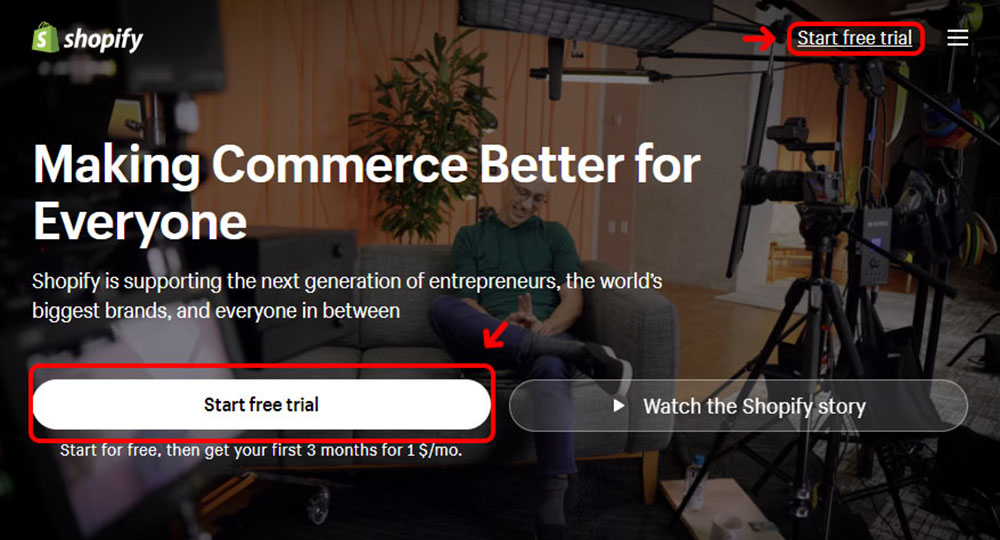
- Follow the prompts to create an account and provide the necessary information.
2. Set Up Your Store
- Enter a unique store name, which will also become your store’s domain name (e.g., yourstorename.myshopify.com).
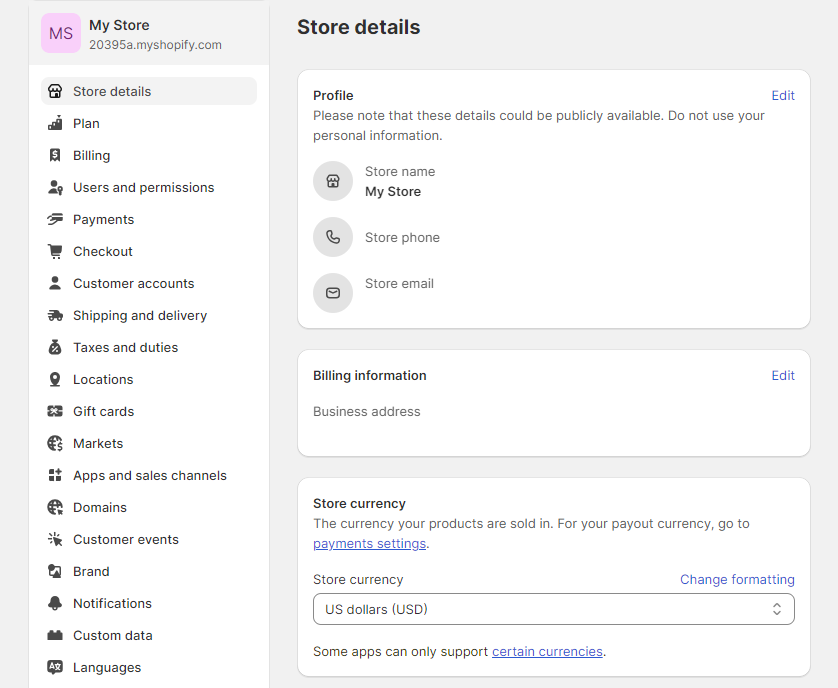
- Answer a few questions to help Shopify tailor your store setup.
3. Add Products
- In the Shopify admin dashboard, go to the “Products” tab.
- Click “Add product” to start adding your products.
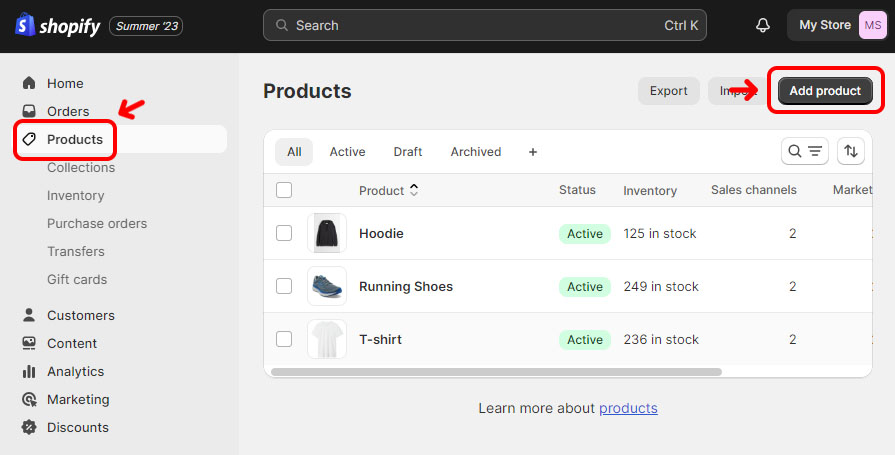
- Provide product details, including title, description, price, images, and more.
- Organize products into categories or collections for easy navigation.
4. Customize Your Store
- Choose a theme or template from the Shopify Theme Store.
- Customize your theme by adjusting colors, fonts, and layout elements.
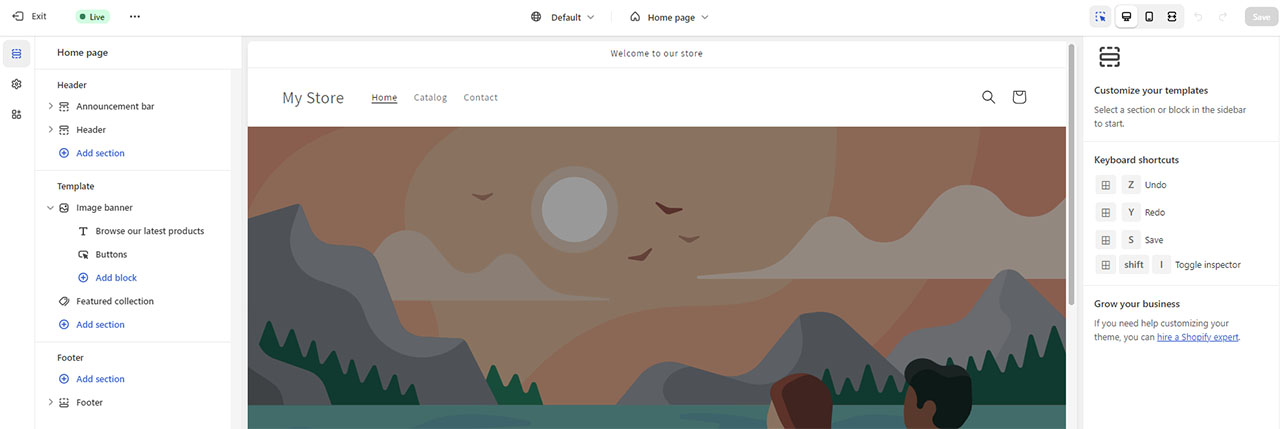
- Add a logo and branding elements to match your brand identity.
5. Set Up Payments and Shipping
- Configure your preferred payment gateways, such as Shopify Payments or other options.
- Set up shipping options, rates, and methods based on your products and customers’ locations.
6. Configure Tax Settings
Determine whether you need to charge taxes on your products and set up tax rates accordingly.
7. Add Domain Name
Purchase and connect a custom domain name for your store (e.g., www.yourstore.com).
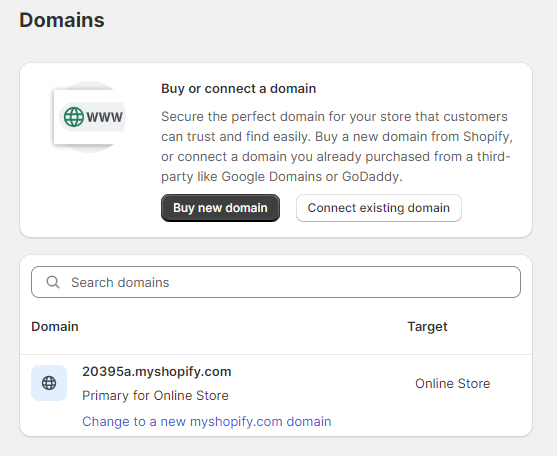
8. Launch Your Store
- Review your store settings, product information, and design.
- Once you’re satisfied, click “Launch” to make your store live.
9. Optimize for SEO
- Edit product descriptions and titles to be search engine-friendly.
- Use relevant keywords to improve your store’s visibility in search engines.
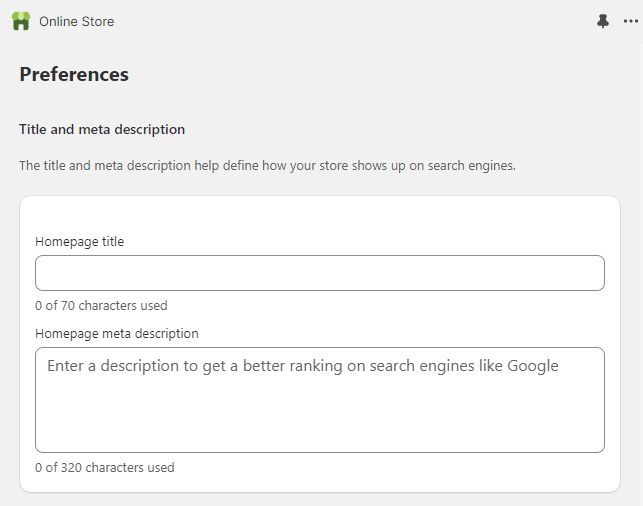
10. Promote Your Store
-
Use social media, email marketing, and other channels to promote your products.Consider running advertising campaigns to drive traffic to your store.
How to grow your Shopify Store?
Create Ads
Running online advertisements through platforms like Google Ads, Facebook Ads, or Instagram Ads can help you target specific audiences and drive traffic to your store. These ads can be tailored to reach potential customers who are likely to be interested in your products.
Leverage SEO

Search Engine Optimization (SEO) involves optimizing your website’s content to rank higher in search engine results. By using relevant keywords, creating high-quality content, and optimizing product pages, you can increase organic (non-paid) traffic to your store.
Read more: Why Shopify is One of the Best E-commerce Platforms for SEO?
Promote on Social Media
Utilize your social media accounts to showcase your products, share engaging content, and interact with your audience. Social media platforms provide a great way to connect with potential customers and build a loyal following.
Put Shipping Tracking on Auto
Providing order tracking information to your customers automatically can enhance their shopping experience. This builds trust and keeps customers informed about their orders, reducing inquiries and enhancing satisfaction.
Add Blog Posts
Regularly publishing blog posts relevant to your products or industry can help establish your store as an authoritative source. Blogging provides value to your audience, improves SEO, and encourages repeat visits to your store.
Offer Free Shipping
Offering free shipping, whether universally or as part of promotions, can incentivize customers to make purchases. Many customers find free shipping to be a compelling reason to complete their orders.
Use Upselling and Cross-Selling Techniques
Upselling and cross-selling involve encouraging customers to purchase a higher-priced product, and suggesting related or complementary products. Implementing these techniques can increase the average order value and customer satisfaction.
Email Marketing Campaigns
Building an email subscriber list and sending targeted email campaigns can keep customers engaged and informed about your latest products, promotions, and updates. Personalized and relevant emails can drive repeat purchases.
Boost Sales by Linking Your Store with Shopify’s Sales Channels
Boosting sales by leveraging Shopify’s sales tools and features involves optimizing your store’s setup and using various tactics to encourage conversions. Here’s how you can achieve this:
- Optimize Product Pages
- Offer Discounts and Promotions
- Utilize Shopify’s Abandoned Cart Recovery
- Implement Shopify’s Product Recommendations
- Leverage Shopify’s Gift Card and Store Credit Options
- Run Flash Sales and Limited-Time Offers
- Implement a Customer Loyalty Program
- Enable Multiple Payment Options
- Use Shopify’s Analytics
- Implement Customer Reviews and Testimonials
Shopify Payment
Shopify Payments is a secure and reliable payment service integrated into the Shopify platform. It allows businesses to manage online transactions and accept payments with ease. Powered by Stripe, a leading online payment provider, Shopify Payments ensures the safety and trustworthiness of transactions.

With Shopify Payments, you can accept payments without additional fees. It supports various currencies for global transactions and accepts major credit cards like Mastercard, American Express, Visa, and more. This merchant-facing payment method provides several features and benefits:
- Easy Setup: Connect your Stripe account to start accepting payments seamlessly.
- Global Reach: Available in 150 countries, making it suitable for businesses with international customers.
- Secure Transactions: Encrypted with advanced security technologies to protect against cyber threats.
- PCI Compliance: Adheres to global cardholder information management standards for secure transactions.
- Two-Factor Authentication: Enhances security by requiring additional verification during login.
- Advanced Fraud Protection: Detects and prevents fraudulent transactions.
- Direct Deposits: Funds are deposited directly into your bank account within 24 to 72 hours.
- Integration with Shop Pay: Allows customers to make in-person payments using Shopify’s point-of-sale system.
Shopify POS
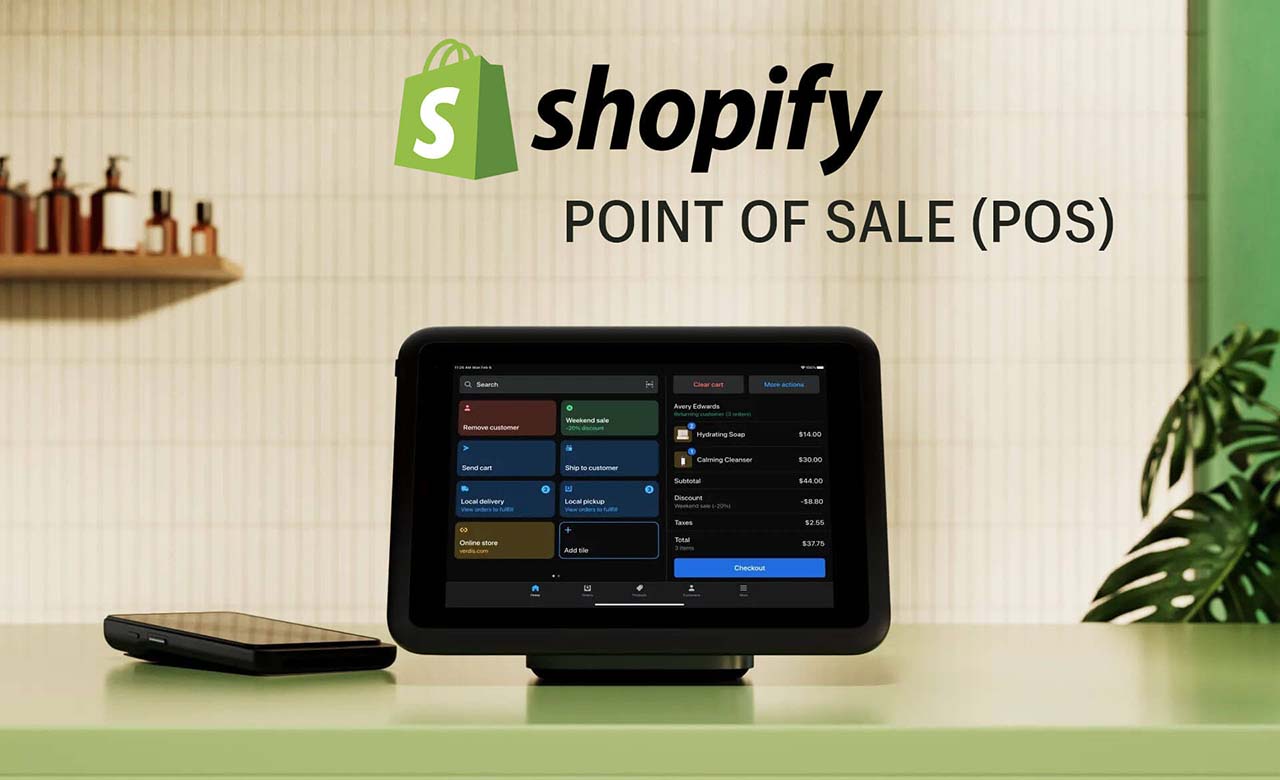
Shopify POS (Point of Sale) is a comprehensive system that enables businesses to seamlessly manage both online and offline transactions from a single dashboard. It accepts various payment methods, including credit cards, debit cards, mobile payments, and cash. The system is an integral part of the Shopify ecosystem and is designed to enhance the retail experience by integrating sales, inventory management, and customer data. It brings users various features and benefits:
- Omnichannel Commerce: Shopify POS offers integration between in-store and online sales, ensuring consistent inventory management and preventing overselling. Customers can shop across different channels, and businesses can send abandoned cart emails to recover potential sales.
- Staff Management: Businesses can manage staff roles and permissions, track employee time, sales, and productivity, creating a streamlined and efficient work environment.
- Marketing Tools: Shopify POS provides various marketing features, including product reviews, email marketing, social media integration, and integration with the Google Merchant Center for enhanced visibility on Google Shopping.
- Inventory Management: The system offers smart inventory management, allowing personalized recommendations based on sales data, low-stock alerts, and inventory tracking across multiple locations.
- Customer Management: Shopify POS enables businesses to create customer profiles, track purchase history, and engage with customers through personalized outreach and rewards.
- Reporting and Analytics: The system provides detailed insights into business performance, offering sales data analysis, order tracking, and chargeback management.
Shopify Support

In the process of running an e-commerce business, there are many ways for you to get support when you encounter any problem. Ways to reach the help you can get:
- Shopify Community: The Shopify community brings together experts and experienced developers. This is the perfect place for you to access a huge, easy-to-use, and responsive knowledge base with over 900,000 members and over 1.15 million posts.
- Shopify Help Center: Shopify’s help center is the e-commerce platform’s knowledge base, which is an online self-service resource. On the help center page, you can search for your own answers by typing your query in the search bar. From your query, Shopify will suggest a series of frequently asked questions that can help you.
- Live Chat Support: The fastest and most direct way to get answers to your problems is to chat live with Shopify’s support team, available 24/7. By simply going to the live chat page and completing an online form, you can start talking to one of Shopify’s advisors.
- Email Support: To contact Shopify via email, you can access it via the form or email [email protected]. However, this method is slower and less convenient than real-time chat support.
- Phone Support: Shopify’s phone support service is also open 24/7, ready to help users with deeper knowledge than what a database or chat can provide.
Shopify Integrations and Add-ons
Shopify’s integration capabilities empower e-commerce businesses by enabling third-party apps to enhance and extend the functionality of their Shopify stores. This integration involves granting access to the store’s data for specific purposes, effectively integrating external software with the core features of Shopify.
Shopify’s integration ecosystem extends beyond these app-specific integrations. Connecting to other e-commerce platforms is possible through an Application Programming Interface (API) and Software Development Kit (SDK). APIs like Shopify Admin API, Storefront API, Partner API, and Payments Apps API facilitate specific functionalities by linking Shopify with external applications.
Shopify offers product add-ons that enable customers to tailor products to their preferences and needs. This capability not only meets customer expectations for customization but also creates opportunities for cross-selling and upselling. Shopify product add-ons can include:
- Additional quantities of the same product.
- Upgraded versions of products with enhanced features.
- Different colors, sizes, or variations of products at varying prices.
- Complementary accessory products to enhance the original purchase.
These product add-ons are presented to customers using various methods:
- Checkboxes.
- Drop-down menus.
- Custom text inputs.
- Drag-and-drop fields.
- Widgets displaying related products.
In summary, Shopify’s product add-on feature is a powerful tool for online retailers to enhance customer experiences, drive revenue growth, and create a sense of customization and value in their offerings.
Is Shopify the Right Tool for You?
This answer is up to you. If you are a new seller looking for opportunities in a huge market of online marketplace, Shopify is the most comprehensive and fastest option. Its features support and help users run the Shopify store smoothly. You don’t have to be a coding-savvy developer to work on Shopify.
With the available features it brings, you can completely design and operate a unique, effective e-commerce website and deliver a great customer experience.
Shopify FAQ
Is Shopify legitimate?
Yes, Shopify is a legitimate and well-established e-commerce platform. It has been in operation since 2006 and has gained a strong reputation in the e-commerce industry. Shopify is used by millions of businesses worldwide to set up and manage online stores.
Is Shopify suitable for beginners?
Yes, Shopify is well-suited for beginners who want to start an online store without extensive technical knowledge. The platform is known for its user-friendly interface, intuitive setup process, and drag-and-drop website builder, making it accessible to individuals who may not have prior experience in building and managing websites.
Is Shopify good for small businesses?
Yes, Shopify is an excellent choice for small businesses looking to establish an online presence and sell products or services. The platform offers a range of features and benefits that cater to the needs of small businesses, making it a popular e-commerce solution for entrepreneurs, startups, and local businesses.
Can I pause my Shopify subscription?
Yes, you can pause your Shopify subscription. Shopify offers a feature called “Pause and Build” that allows you to temporarily pause your subscription while you work on your store or take a break. During the pause, you won’t be charged the regular monthly subscription fee.
Does Shopify have a trial?
Yes, Shopify offers a 3-day free trial period for new users who want to test out the platform before committing to a subscription. During the free trial, you can explore and set up your online store, add products, customize your store’s appearance, and test out various features.
Can I use Shopify on my phone?
Yes, you can use Shopify on your phone. Shopify offers a mobile app that allows you to manage and monitor your online store on the go. The Shopify mobile app is available for both iOS (Apple) and Android devices.
Is Shopify Free?
Shopify is not entirely free. While it does offer a free trial period during which you can explore its features, create your online store, and get a sense of how the platform works, Shopify is a paid e-commerce platform.
Final Verdict
Shopify stands as a powerful and accessible e-commerce platform, offering a robust set of tools and features for individuals and businesses looking to establish and manage online stores.
Shopify offers various pricing plans to cater to businesses of different sizes. From the Basic plan, suitable for startups, to the Advanced plan designed for larger enterprises, there is a plan to match your requirements. Consider your budget and the features you need when selecting a plan.
Ready to take your e-commerce venture to the next level? Try Shopify today and unlock a world of possibilities for your online store.


